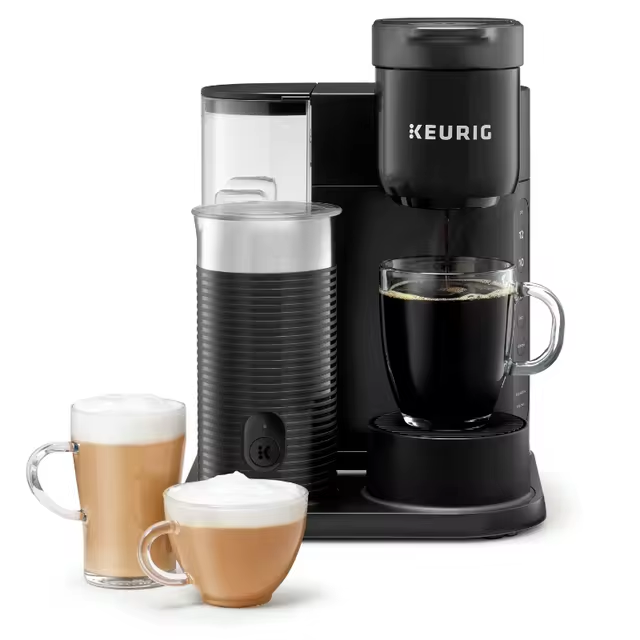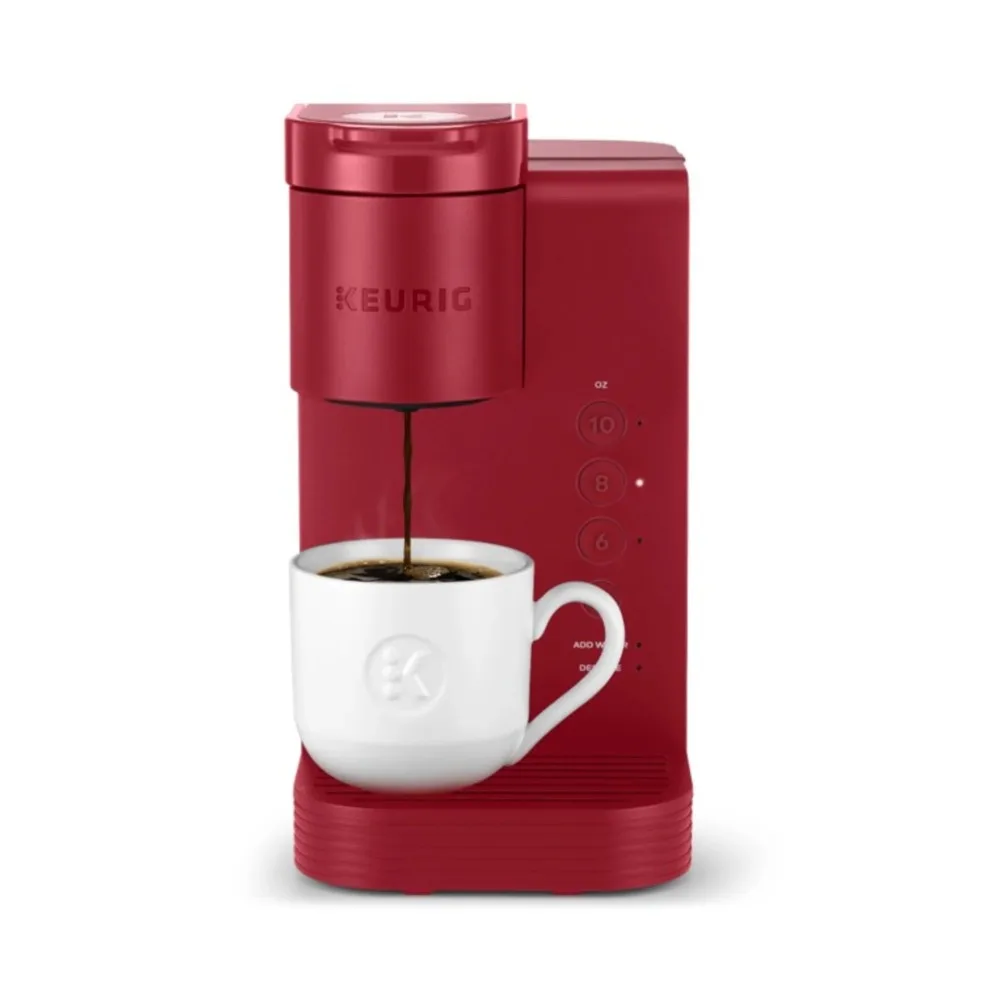
Introduction to Descaling Keurig Machines
If you love your Keurig coffee maker, you know how important upkeep is. Like any appliance, a Keurig requires regular maintenance to operate smoothly. Descaling is a critical part of this maintenance routine. In simple terms, descaling means removing mineral buildup from your coffee maker’s internal parts. These minerals, mostly calcium and lime, come from water and can clog your machine over time. Not only can this buildup affect the taste of your coffee, but it can also slow down brewing and reduce the efficiency of your machine. Let’s dive into why descaling your Keurig is essential and how to do it effectively.

Signs That Your Keurig Needs Descaling
Not sure if your Keurig needs descaling? Look out for these telling signs. If your coffee takes longer to brew, it’s a clear indicator. Also, any unusual noise during brewing is a red flag. Sometimes, the coffee stream may sputter or come out in bursts. This too can signal a need for descaling. Lastly, a change in the taste of your coffee can suggest mineral buildup.
Regular descaling prevents these issues. It ensures your coffee tastes great and your Keurig operates smoothly. Remember, it’s not just about taste. Descaled machines are also more efficient. They work faster and quieter. Plus, they are less likely to break down.
To summarize, watch for these signs:
- Longer brewing times.
- Strange noises during brewing.
- Sputtering coffee output.
- Taste changes in your coffee.
Encounter any of these? It’s time to descale your Keurig coffee maker. Keep it clean, and it will keep giving you the perfect cup.
Understanding the Descaling Process
Understanding the descaling process is key to a well-maintained Keurig. Descaling removes mineral deposits from your coffee maker’s inner workings. Over time, water leaves calcium and limescale behind. This can slow down your Keurig, alter coffee taste, and make loud noises. Unchecked, it may even cause breakdowns. To descale means to safely dissolve these minerals and rinse them away. This keeps your Keurig performing at its best. You’ll need a descaling solution for this. Many turn to vinegar for its effectiveness and low cost. It’s a simple mix of water and white vinegar. The solution runs through your machine, breaking down build up. After descaling, running several cycles of clean water clears any leftover residue. It’s a straightforward process, ensuring your Keurig stays in top shape for your daily brew.
Step-by-Step Guide: Descaling with Vinegar
Emptying the Reservoir and Preparing the Machine
First, ensure your Keurig is off and cool. Empty the water reservoir completely. Remove any K-Cup pods and the water filter, if present. Now, your coffee maker is ready for descaling.
The Vinegar and Water Mixture
Mix equal parts of white vinegar and water. Fill the reservoir halfway with this solution. This helps dissolve mineral buildup inside your Keurig.
Running the Descale Cycle
Turn on your Keurig and place a large mug on the drip tray. Run a brewing cycle without a K-Cup. Continue until the reservoir is empty. If your Keurig has a ‘descale’ mode, use it.
Flushing Out Vinegar Residue
After descaling, fill the reservoir with fresh water. Run several brewing cycles to rinse out any vinegar traces. Keep going until the vinegar taste and smell are gone.
Cleaning External Components
While the inside cleans, wipe down your Keurig’s exterior. Use a damp cloth for the outside. Clean the drip tray and K-Cup holder with soapy water. Let them dry before reassembling.
Following this guide meticulously will ensure that your Keurig brews delicious coffee. Regular descaling maintains your coffee maker’s longevity and efficiency.
 Alternative Methods: Descaling with Citric Acid and Baking Soda
Alternative Methods: Descaling with Citric Acid and Baking Soda
While vinegar is a common choice, you can also use citric acid or baking soda. These items are often already in your pantry. They work well to break down mineral deposits too. Let’s look at how you can use these alternatives.
Preparing the Citric Acid Solution
To start with citric acid, measure and mix 1 tablespoon of it with 4 cups of water. Pour this mixture into the empty reservoir of your Keurig. Then run a few brew cycles. Do this until the machine asks for water. Let the solution sit in the machine for 4 hours. After that, rinse your Keurig with clean water.
The Baking Soda Indicator Trick
Baking soda can show if there’s still vinegar in your machine. After cleaning, add a pinch of baking soda to a cup of water. If it fizzes, vinegar remains. Run more clean water through your Keurig to remove all vinegar. This ensures your next coffee won’t taste like vinegar.
By using these methods, you can keep your Keurig clean without vinegar. Remember to descale every 3 to 6 months. Use filtered water to help prevent quick buildup. Regular cleaning keeps your Keurig brewing tasty coffee, cup after cup.
How Often Should You Descale Your Keurig?
You should descale your Keurig regularly to prevent issues. How often largely depends on usage and water quality. For most, descaling every 3 to 6 months works well. Hard water areas may need it more frequently. Regular maintenance keeps coffee tasting good and machines running smoothly.
Use simple clues to gauge descaling needs. If your machine takes longer to brew, makes vibrations, or coffee tastes off, it’s probably time. Following these intervals will improve your machine’s function and lifespan.
Make a routine to remember descaling. Perhaps, mark it on your calendar. Consistent descaling ensures your Keurig performs well and your coffee always tastes fresh.
Tips for Maintaining a Clean Keurig
Maintaining your Keurig coffee maker is key to its performance and longevity. Regular maintenance goes beyond descaling. It helps prevent buildup and keeps your coffee tasting great. Here are some tips to keep your Keurig in top condition.
Using Filtered Water
Using filtered water is one of the best ways to reduce mineral buildup. It means less frequent descaling. Filtered water can also improve the taste of your coffee. If you have hard water, consider a water filter pitcher. Or, use bottled water for your Keurig.
Cleaning Removable Parts
Your Keurig has several removable parts. These include the water reservoir, drip tray, and K-Cup holder. Remove these parts and wash them with soapy water. Do this weekly to prevent buildup and mold. Allow parts to air dry before reassembling.
Daily and Weekly Maintenance Tips
To keep your Keurig clean, follow these simple routines:
- After each use, remove the used K-Cup.
- Once a day, wipe down the machine exterior with a damp cloth.
- Every week, clean the K-Cup holder and drip tray.
- Empty the water reservoir if not used for a few days. Refill with fresh water.
- Check for coffee grounds around the brewer needle. Clean it with a paperclip if needed.
By following these tips, your Keurig will stay clean. This helps ensure your coffee always tastes fresh. Remember to descale your Keurig every 3 to 6 months. Use reminders to help you stay on track with maintenance.
 FAQs on Descaling Keurig Coffee Makers
FAQs on Descaling Keurig Coffee Makers
When you’re a proud Keurig owner, you want to keep your coffee maker in peak condition. This includes understanding how to tackle any issues that arise during descaling. Additionally, recognizing the value of routine care can make a big difference in your Keurig’s performance.
Troubleshooting Common Issues
Are you facing challenges while descaling your Keurig coffee maker? Here are some quick fixes:
- Vinegar Taste Remains: Keep running cycles with fresh water until the taste disappears.
- Descale Light Still On: After descaling, rinse the reservoir and do a few more water cycles.
- Slow Brewing Post-Descaling: Check and clean the exit needle and K-Cup holder for coffee grounds.
- Machine Noise After Descaling: It should quiet down after proper rinsing. If not, contact Keurig support.
These tips should resolve most issues, ensuring your coffee tastes fresh and your machine runs smoothly.
Importance of Regular Maintenance
Regular maintenance keeps your Keurig working well and your coffee tasting great. How often you descale is critical. If unsure, aim for every 3 to 6 months. Between descaling, clean removable parts and use filtered water. A clean Keurig means delicious coffee every time. Your Keurig deserves care, so take the time for maintenance. Your taste buds will thank you.
By taking care of your Keurig, you avoid most problems and enjoy the best coffee experience possible.
Conclusion: Enjoying Consistently Great Coffee
When you care for your Keurig, it cares for your coffee. Descaling is key to maintenance. It prevents buildup and keeps your coffee tasting fresh. Make it a routine, and enjoy rich, delicious coffee every day.
Regular descaling, as part of your Keurig care, ensures longevity and peak performance. Use vinegar, citric acid, or baking soda to keep it clean. After descaling, your machine brews faster and more quietly. Plus, it helps avoid any coffee taste changes.
In conclusion, remember to descale every 3 to 6 months. Between these times, keep up with regular cleaning. Use filtered water to slow down mineral buildup. Wash removable parts weekly. And, wipe down the exterior daily.
With these simple steps, your Keurig stays in top condition. Your coffee experience remains high quality with every cup. Take care of your Keurig and it will continue to serve the perfect brew!